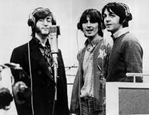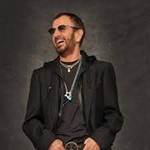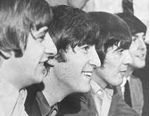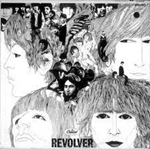- Register
- Log in to Tune-In
- Wishlist (0)
-
Shopping cart
(0)
You have no items in your shopping cart.
Beatles News

Floor seats for Paul McCartney at the Dome list for over 700 dollars on Ticketmaster. But when Sir Paul first played the Hollywood Bowl with the Beatles, the group’s manager Brian Epstein kept things a bit more affordable.
“They would only let me charge three, four, five, six and seven dollars all three years they toured,” says the man who promoted the show. “Now, I could have gotten 20 dollars without a blink of an eye. But no, Brian said that he wanted people to save their money to buy albums.”
Bob Eubanks has been a familiar face on TV since the Sixties. He’s best known as host of daytime and nighttime versions of “The Newlywed Game” on ABC and the syndicated coverage of the Tournament of Roses Parade for 36 years. But before that, he was a DJ in Los Angeles and a music promoter.
Source: localsyr.com/WSYR
details
The Beatles‘ The White Album includes many great songs. For example, it includes The Beatles’ “Julia,” a moving ballad about John Lennon’s mother. Another 1960s rock star revealed he helped write the song.
The book All We Are Saying: The Last Major Interview with John Lennon and Yoko Ono includes an interview from 1980. In it, John was asked about The Beatles’ “Julia.” John said the song was partly about his mother, Julia Lennon, and partly about Yoko Ono. John said he didn’t write the track alone but he didn’t name the song’s co-writer.
Donovan is a rock star most known for songs such as “Sunshine Superman” and “Season of the Witch.” During a 2016 interview with Vulture, he discussed co-writing The Beatles’ “Julia” when he was in India.
Source: cheatsheet.com
details
The British queen, who is celebrating 70 years on the throne on June 2, was thanked by Sir Paul McCartney (left) in an Instagram post. Getty Images
Get back! Paul McCartney is celebrating Queen Elizabeth II’s Platinum Jubilee with a sweet #TBT snapshot.
The Beatles legend, 79, posted a classic photo Thursday of himself and the 96-year-old monarch posing together at the royal opening of the Liverpool Institute for Performing Arts in 1996.
The beloved rock icon captioned the image: “70 beautiful years of Queen Elizabeth the second. Congrats ma’am! And thanks.”
In the smiling pic, the queen is seen looking on as she sports a bright baby-blue hat and dress while carrying a bouquet of white flowers.
Source: Samantha Ibrahim/nypost.com
details
George Harrison was often labeled “the quiet Beatle” in the heyday of the British quartet’s career. Perhaps this nickname came about because of Harrison’s role as lead guitarist or the backseat he took in interviews with the press. Regardless of Harrison’s perceived quietness, the late Beatle had a lot to say in song. And after The Beatles broke up in 1970, Harrison dropped his first solo single, “My Sweet Lord” just seven months later. “My Sweet Lord” has overt religious connotations and references. What makes the religious content of this song different from most, however, is its usage of both Christian and Hindu terminology. Harrison’s goal in combining both religions in one song was to call out religious sectarianism, or the perceived notion of conflict between groups. To put it simply, Harrison just wanted everyone to get along, so he wrote a song.
Source: americansongwriter.com
details
While his reign on the top of the charts may be over, Ringo Starr’s musical journey continues.
The 81-year-old pop culture icon, who became an international sensation as drummer for the Beatles and continued his musical career with Ringo Starr & His All-Starr Band, will soon receive an honorary degree from Berklee College of Music – a doctorate in music.
On Thursday, the college will host a tribute concert celebrating Starr’s doctorate and honoring his legendary career.
Gregg Bissonette, Starr’s bandmate and close friend, will also make remarks. Berklee students will perform many of Starr’s hit songs.
At the 2022 Berklee College Commencement in early May, Starr was announced as a recipient of the degree, though he was unable to enjoy the celebration in person. Instead, he addressed the Class of 2022 in a prerecorded statement.
Source: worldnews.upexampaper.com
details
George Harrison was many things during his lifetime: An underrated guitarist, crucial to The Beatles’ success, and the one who forced the members of the supergroup The Traveling Wilburys to check their egos at the door. Harrison was perpetually in good spirits, even as he battled cancer near the end of his life. His final words to Ringo Starr illustrate it, and so does how Harrison and Paul McCartney interacted when the former was near death.
When The Beatles needed to replace original drummer Pete Best, Harrison talked McCartney and John Lennon into adding Starr. Lennon and McCartney took up a lot of the spotlight, but Starr’s steady timekeeping on drums and Harrison’s underrated guitar-playing helped the band achieve legendary status. Harrison and Starr spent years working together closely, and Starr made sure to see his former bandmate before his death.
Source: cheatsheet.com
details
The Beatles never met a genre they didn't make their own, incorporating everything from raga to chamber pop to vaudeville during their revolutionary career. Still, when most people think of the Fab Four's vast catalog, "heavy" is probably not the first descriptor that comes to mind — but don't think for a second that rock's greatest shapeshifters couldn't bring the heat.
From their early days as Liverpool's premier club band to their godlike status in the late '60s, the Beatles delighted in destroying and rewriting the pop music playbook at their whim. They worshipped at the altars of Little Richard and Chuck Berry as kids and could whip audiences into a frenzy with their breathless rock 'n' roll freak-outs.
Source: ultimateclassicrock.com
details
A rock legend will be selling some of his artwork in Boston this week to raise money for charity.
Ringo Starr will be putting on an art exhibition at the Wang Theatre from Tuesday, May 31 to Thursday, June 2 ahead of his band, Ringo Starr & His All-Starr Band, playing a show at the theatre Thursday.
The exhibition, "The Art of Ringo Starr", will feature limited edition artworks made by Starr himself. Each piece is individually numbered and is signed by Starr.
All of the artworks are available for purchase and 100 percent of the proceeds will go to the Lotus Foundation, a fund that helps people dealing with illnesses like cancer, victims of domestic violence, people experiencing homelessness, and animals in need.
Source: wbznewsradio.iheart.com
details
People believe Paul McCartney has thrown his support behind Johnny Depp after projecting the actor's image during a recent concert.
Depp took the 36-year-old to court over an article she wrote in 2018, in which she claimed to be a survivor of domestic abuse.
While the op-ed didn't name Depp, 58, he claims that it damaged his career, and sued Heard for $50 million.
In turn, Heard counter-sued Depp for $100m.
The jury was sent out to deliberate last Friday, 27 May, and is set to decide on the high profile case this week.
Source: Dominic Smithers/unilad.co.uk
details
The Beatles’s self-titled ninth record is known more adoringly by the world as The White Album.
If the cover is as simple as they come – a sea of white accompanied by the band’s name imprinted just over halfway down – the tracks it contains are anything but: a compilation of oddities with varying genres that were clearly deemed too extraordinary for the charts (none were released as singles in the UK).
The majority of tracks were written in the spring of 1968 when the quartet famously travelled to Rishikesh in India to partake in a course of Transcendental Meditation under the guidance of Maharishi Mahesh Yogi.
Source: Jacob Stolworthy/news.yahoo.com
details
John Lennon had an “impractical” idea for a song from The Beatles’ Revolver. He revealed what he thought of the finished song.
The Beatles’ Revolver became a hit in multiple countries.
Paul McCartney, Ringo Starr, John Lennon, and George Harrison on the cover of The Beatles' 'Revolver'
John Lennon wanted thousands of monks to chant on a song from The Beatles’ Revolver. He subsequently realized this was impractical but he wished the final song was closer to his original idea. Notably, The Beatles’ longtime producer compared the Fab Four’s creative process to that of a famous painter.
The 1968 book The Beatles: The Authorised Biography includes many asides from the Fab Four. In one of them, John discussed how his songs didn’t always reflect his ideas. “Often the backing I think of early on never comes off,” he revealed.
John then brought up a song from The Beatles’ Revolver. “With ‘Tomorrow Never Knows,’ I’d imagined in my head that in the background you would hear thousands of monks chanting,” he recalled. “That was impractical of course, and we did something different.”
Source: c details

The question of what to do after you’ve been in the biggest band of all time was approached in many ways by The Beatles, but George Harrison provided one of the most fascinating answers: start your own film production company, and make films you like, even when they court controversy. Although it had its fair share of flops (such as Shanghai Surprise and Water), Harrison’s Handmade Films was a genuine British success story in the 80s. This was a decade when financial support had fallen through due to the collapse of local studios and the rise of the Thatcher government, which did not see arts funding as a priority. Fewer films were produced locally and dominated by “prestige” releases, such as Gandhi and A Passage to India, that were increasingly bankrolled by Hollywood.
Source: Andrew Taylor/collider.com
details
You walk into a dark room and see the four of them blown up on a giant screen. They’re playing a blistering live set. It is a gig, in rock circles, that has been acknowledged as one of the most famous musical performances on film. But you never knew it existed. In that space, in that moment, you luxuriate in an experience that’s completely new.
Which is exactly why Anabel Martinez, 37, was smiling as she sat in a dark, circular-shaped gallery at the Rock and Roll Hall of Fame on a recent Sunday morning.
She came to Cleveland for a business trip and paid $35 for a general admission ticket to the museum not knowing about the special Beatles exhibit, “Get Back to Let It Be.” Launched in March, it’s a show meant to complement the acclaimed, 468-minute documentary series directed by Peter Jackson and aired by Disney+ last November.
Source: Geoff Edgers/spokesman.com
details
Tom Petty didn’t bother telling people he was making music with The Traveling Wilburys. Who would believe that Petty was in a supergroup with George Harrison, Bob Dylan, Jeff Lynne, and Roy Orbison? It was too good to be true; almost impossible.
George formed The Traveling Wilburys by accident. After recording his 1987 album, Cloud Nine, Europe wanted an extra song for a 12-inch single.
That night, he told Lynne and Orbison he needed a song quickly. Lynne agreed to help, and Orbison told the guys to call him when they found a recording studio.
Source: cheatsheet.com
details
James Taylor has spoken about auditioning to join The Beatles‘ label Apple Records in the late 1960s.
The singer-songwriter said in a new interview that he believes his youth – besides his musical talent – helped him have the confidence to sell himself.
“I had some kind of competence and the arrogance of youth, without which nobody would ever do anything, because you’d hedge your bets,” Taylor recalled to GuitarWorld of auditioning in front of Paul McCartney and George Harrison.
“There’s a stage in our development where you’re allowed to do impossible things, which is why the military looks to people about that age. You can talk people into doing things that if you were asked when you were 35, you’d say, ‘No thanks, I’ll pass on that.’
Source: Charlotte Krol/nme.com
details